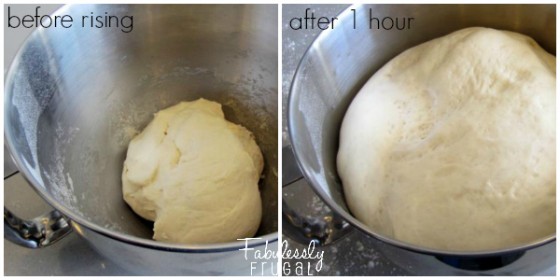Rising and Proofing
Rising and Proofing is the second step in the baking process. This step involves two things: first, the conversion of sugars to alcohols by yeast and second, the production of carbon dioxide by those same yeast cells. Yeast, as (tiny) living creatures, engage in respiration, which comes in two main varieties aerobic and anaerobic - the aerobic variety occurs first and produces carbon dioxide which gives bread it's characteristic holes in the dough and allows the actual rising to occur. After a while, the yeast begin to switch over to anaerobic respiration which produces alcohols and gives the bread it's flavour - in general longer periods of proofing allow for more flavourful breads. The physics in this step is found mostly in the chemical kinetics of the reactions - the way and speed in which molecules interact with one another to produce the final product from the reactants. Much of chemical kinetics is governed by the principles of kinetic energy and momentum.
Rising and Proofing is the second step in the baking process. This step involves two things: first, the conversion of sugars to alcohols by yeast and second, the production of carbon dioxide by those same yeast cells. Yeast, as (tiny) living creatures, engage in respiration, which comes in two main varieties aerobic and anaerobic - the aerobic variety occurs first and produces carbon dioxide which gives bread it's characteristic holes in the dough and allows the actual rising to occur. After a while, the yeast begin to switch over to anaerobic respiration which produces alcohols and gives the bread it's flavour - in general longer periods of proofing allow for more flavourful breads. The physics in this step is found mostly in the chemical kinetics of the reactions - the way and speed in which molecules interact with one another to produce the final product from the reactants. Much of chemical kinetics is governed by the principles of kinetic energy and momentum.

Image
source:
http://fabulesslyfrugal.com/wp-content/uploads/2013/11/french-bread-dough-rising-560x280.jpg